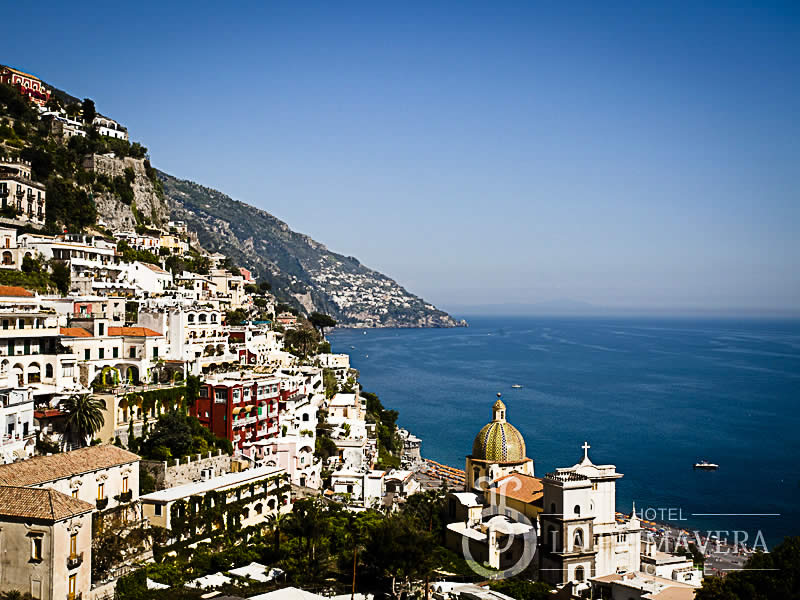This area conserves traces of human inhabitation from the Palaeolithic period. According to legend, Positano was founded by Poseidon, or Neptune, the god of the sea, for the nymph Pasitea, whom he loved.
It is certain that the Phoenicians and Greeks, during their voyages towards the west, came ashore in this location, which was then perhaps inhabited by Oscans or Picenians.
Near Spiaggia Grande (the main beach) the Romans built a sumptuous patrician villa, which is now buried beneath the gardens and the Church of the Assunta.
With the fall of the Roman Empire, Positano became part of the Republic of Amalfi, the first maritime republic, and enjoyed a period of prosperity due to sea trade with the other Mediterranean countries.
A period of decadence began with the Norman conquest in the second half of the 11th century.
This was unfortunately followed by further difficult periods, particularly with the Angevin and Aragonese domination, during which the town was pillaged on several occasions, first by Saracen and then by Turkish pirates.
The inhabitants of Positano built three guard towers to defend themselves from the continuous incursions by pirates. These still provide an interesting sight today in Fornillo, Trasita and the Sponda, with others that can be seen inside the town.
In 1492 Positano became the feudal property of Giovanni Miroballo, and later of the Mastrogiudice and Cossa families. These devastated the area during this period, while famines, pestilence and frequent seaquakes, led to a drastic reduction of the population.
During the 16th and 17th centuries, the swift and solid ships of Positano traded with the Middle East, bringing back spices, silks and precious woods. The town’s characteristic baroque houses were built in this period, and can still be seen perched on the mountain today, with their balconies jutting out over the sea.
